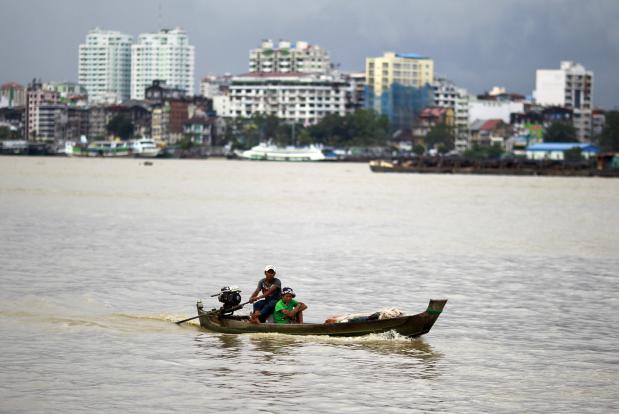Yangon is dealing with a downtown problem as its population has doubled since 1983 and is expected to double again in the next 15 years
24 กรกฎาคม 2558
Yangon is dealing with a downtown problem; as the city’s population has doubled since 1983, and is expected to double again in the next 15 years, the city must inevitably increase in area, and is searching for prospects across the river for new areas for homes and businesses.
Hlaingtharyar in Yangon’s northwest has seen exponential growth, and this may be followed by the Yangon New City project in the western Twante township and the southern Dala township.
Dala, although in full view of Yangon, remains physically and economically isolated from the rest of the city. To reach the township by car currently involves a circuitous route heading out to Hlaingtharyar township and then down along the west bank, a trip that can take two hours from downtown. Many do commute from Dala into Yangon, mostly via ferries and boats, but businesses have failed to move to the largely rural township.
Masahiko Suzuki, a Japanese International Cooperation Agency (JICA) advisor to Yangon City Development Committee (YCDC), told Myanmar Business Today that land in Dala was generally of poor quality and low-lying. He said that it is inadvisable to concentrate on the township when there are much closer, more accessible areas that could attract business and be developed. JICA has included Dala in its long-term transportation plans, however, and that the area, “can be developed after 30 years,” according to Suzuki.
Still, a bridge to Dala was approved by the parliament after a struggle to compensate locals for the property that will be bulldozed. Rumours of the bridge have led to land speculation for years, and this has exploded since the bridge approval.
Ye Naung, a real estate agent who deals with land and property in Dala, told Myanmar Business Today that land prices had gone up and down, but he claimed that after the parliament’s approval, they have increased 500 percent. He expects that speculative buying will continue to rise for some time, especially if major projects are implemented on the Dala side of the river.
Northwest of Dala lies Twante township, the seat of the long-debated Yangon New City project. The development project was re-approved last month after it was put on hold due to the opaque nature of the stakeholders and construction contracts. With this project, two bridges are planned to span the Yangon river in Kyimyindaing township. These bridges have not been approved individually in parliament, but are being debated as part of the Yangon New City project, and, like the Dala bridge, are controversial due to the need to seize land for infrastructure.
Further north on the Yangon river, Hlaingtharyar township has seen some transformation, as it has a bridge connecting it directly to the rest of the city. The township is still far from downtown, putting Yangon New City or Dala at an advantage in the future. Hlaingtharyar has been at an advantage, having the Aung Zeya Bridge as a transportation option since 1997, and a second, the Bayintnaung Bridge, having been completed earlier this year. Still, traffic remains restricted across the river, posing problems for local industry.
Residences and industry are both thirsty propositions, and potable water supplies across the river could be strained by rapid development. One luxury development, Pun Hliang Golf Estate, has had to build its own water treatment plants for its condos and golf course.
But if bridges, water and proper land can be built, the regions across the river could help to depressurise the increasingly crowded downtown, while still keeping the historical centre of the city as the hub of commerce and urban life. A possible comparison could lie in Shanghai’s Pudong region, which lay as farmland until the mid-1990s, when a construction boom allowed the city to grow east and transforming the backwater into the city’s financial centre.
Source: http://www.mmbiztoday.com/











